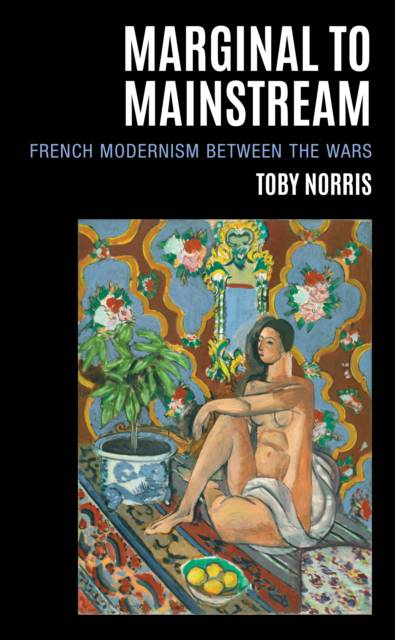
- Afhalen na 1 uur in een winkel met voorraad
- Gratis thuislevering in België vanaf € 30
- Ruim aanbod met 7 miljoen producten
- Afhalen na 1 uur in een winkel met voorraad
- Gratis thuislevering in België vanaf € 30
- Ruim aanbod met 7 miljoen producten
Zoeken
Omschrijving
Marginal to Mainstream: French Modernism Between the Wars traces the near-miraculous progress of modern art in France in the first half of the twentieth century. Before World War I, it was a marginal phenomenon, largely absent from the museums and bought and sold by a handful of second-string dealers; by the early 1950s it had been canonized as the representative form of the epoch. The triumph of modernism, and the simultaneous establishment of Paris as the crucible of modern art, were not the products of a coherent policy but of a stumbling and spasmodic process. France was the leading democratic nation in Europe, and it wanted its art to reinforce its prestige on the international stage, but no-one could agree how best to achieve this. Toby Norris shows how, amidst the policy squabbles and in-fighting of representative government, France fumbled its way toward an art of democracy and in the process helped install modern art as the house style of democratic capitalism.
Specificaties
Betrokkenen
- Auteur(s):
- Uitgeverij:
Inhoud
- Aantal bladzijden:
- 326
- Taal:
- Engels
- Reeks:
Eigenschappen
- Productcode (EAN):
- 9781683932482
- Verschijningsdatum:
- 30/10/2023
- Uitvoering:
- Hardcover
- Formaat:
- Genaaid
- Afmetingen:
- 159 mm x 236 mm
- Gewicht:
- 566 g

Alleen bij Standaard Boekhandel
+ 316 punten op je klantenkaart van Standaard Boekhandel
Beoordelingen
We publiceren alleen reviews die voldoen aan de voorwaarden voor reviews. Bekijk onze voorwaarden voor reviews.











